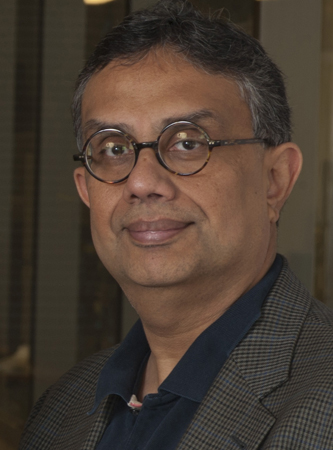Research goal: Computational weather, climate models with 10 times finer resolution
Rice University computer scientist Krishna Palem has won a prestigious Guggenheim Fellowship to collaborate with colleagues in the United Kingdom with the goal of making the resolution of weather and climate models 10 times finer through supercomputing with an ultra-energy-efficient approach.
Palem is one of 175 scholars, artists and scientists — and one of only two computer scientists — chosen as 2015 Guggenheim Fellows. The fellows represent 51 disciplines and 63 academic institutions and were chosen from more than 3,100 applicants. Funded by the John Simon Guggenheim Memorial Foundation, the fellowships are awarded on the basis of prior achievement and exceptional promise to allow scholars to pursue their work with creative freedom.
“I am deeply honored to be recognized by the Guggenheim Foundation, especially recognizing the future promise of this work by applying the energy-saving benefits of inexact computing to weather and forecasting and climate modeling,” said Palem, Rice’s Ken and Audrey Kennedy Professor of Computing. “Ultimately, we hope that improving the resolution of weather models will enable forecasts to be made with substantially reduced uncertainty.”
In a series of papers since 2003, Palem laid the foundation of a new approach to computing that can trade computational accuracy for physical energy consumption. Since then, he has demonstrated that specialized computing architectures can trade computational precision for energy savings. For some applications, this technique — which is known as “inexact computing” or “approximate computing” — can slash energy significantly while delivering results that do not compromise the quality of the solution as perceived by the user.
Building on this work, Palem has been collaborating with the group headed by noted physicist and atmospheric modeler Tim Palmer, the Royal Society Research Professor in Climate Physics at Oxford University. In findings published this spring, Palem, Palmer and colleagues demonstrated that inexact computing could potentially reduce by a factor of three the amount of energy needed to run weather models without compromising the quality of the forecast.
Palem said the Guggenheim will allow him to study and learn weather and climate models in depth to significantly improve their quality. He and Palmer’s team will also implement and test approximate computing on the comprehensive models used at the European Centre for Medium-Range Weather Forecasts in Reading, England.
“To simulate Earth’s weather and climate, global simulators calculate variables like temperature, humidity, wind speed and other attributes,” Palem said. “Global simulators use supercomputers for tracking as these variables change over time at millions of points on Earth’s surface, and the greater the number of points, the finer the resolution of the simulator.”
He said that based on his understanding of weather forecasting, simulators currently have a grid-point resolution around 10 kilometers or so, too coarse to resolve fine grained phenomena such as those generated by cloud systems. The resolution of climate simulators is coarser still.
“Today’s models can simulate mid-latitude weather systems that stretch for thousands of kilometers, but they cannot accurately resolve more localized phenomena like convective cloud formation, which rarely extends beyond a few tens of kilometers,” Palmer said.
“The field of inexact computing will allow us to make use of valuable computational resources much more efficiently. By focusing on energy efficiency in global weather and climate computations, we hope to increase the dynamic range of weather and climate models to allow convective cloud systems can be resolved. One can summarize this project by the phrase ‘more accuracy with less precision.’ This may sound contradictory but it is not,” Palmer said. “The field of inexact computing is opening up new exciting possibilities in scientific computation.”



Leave a Reply